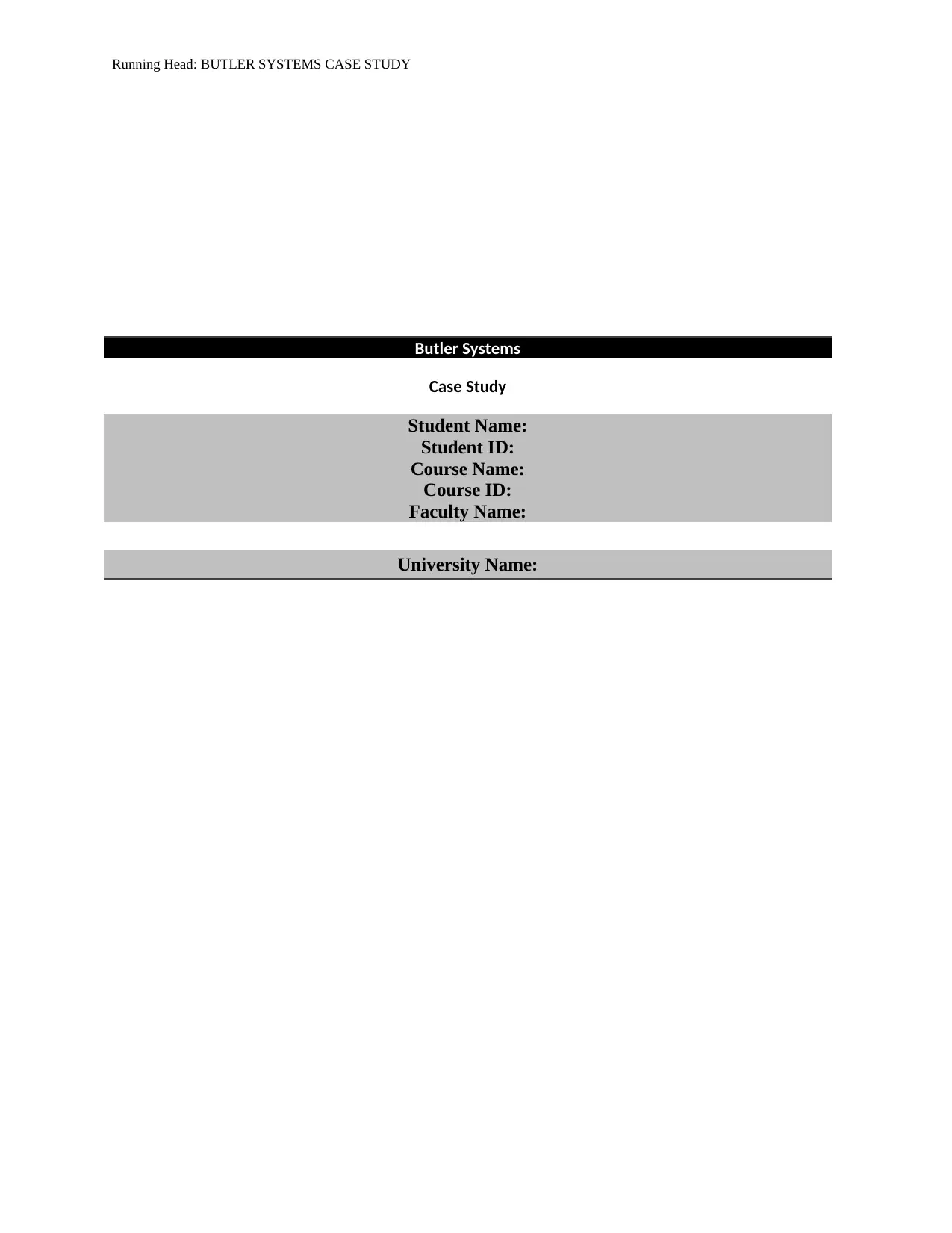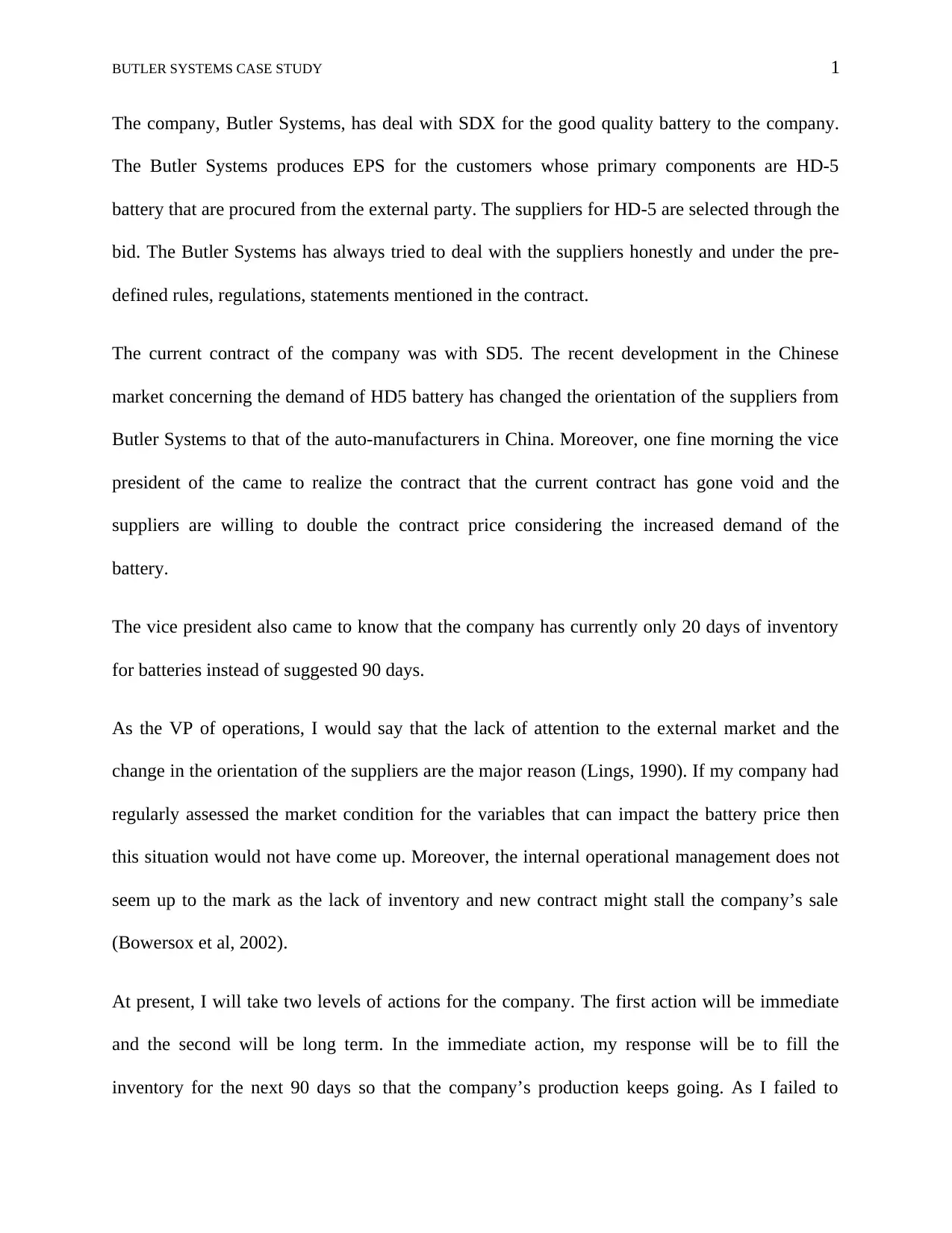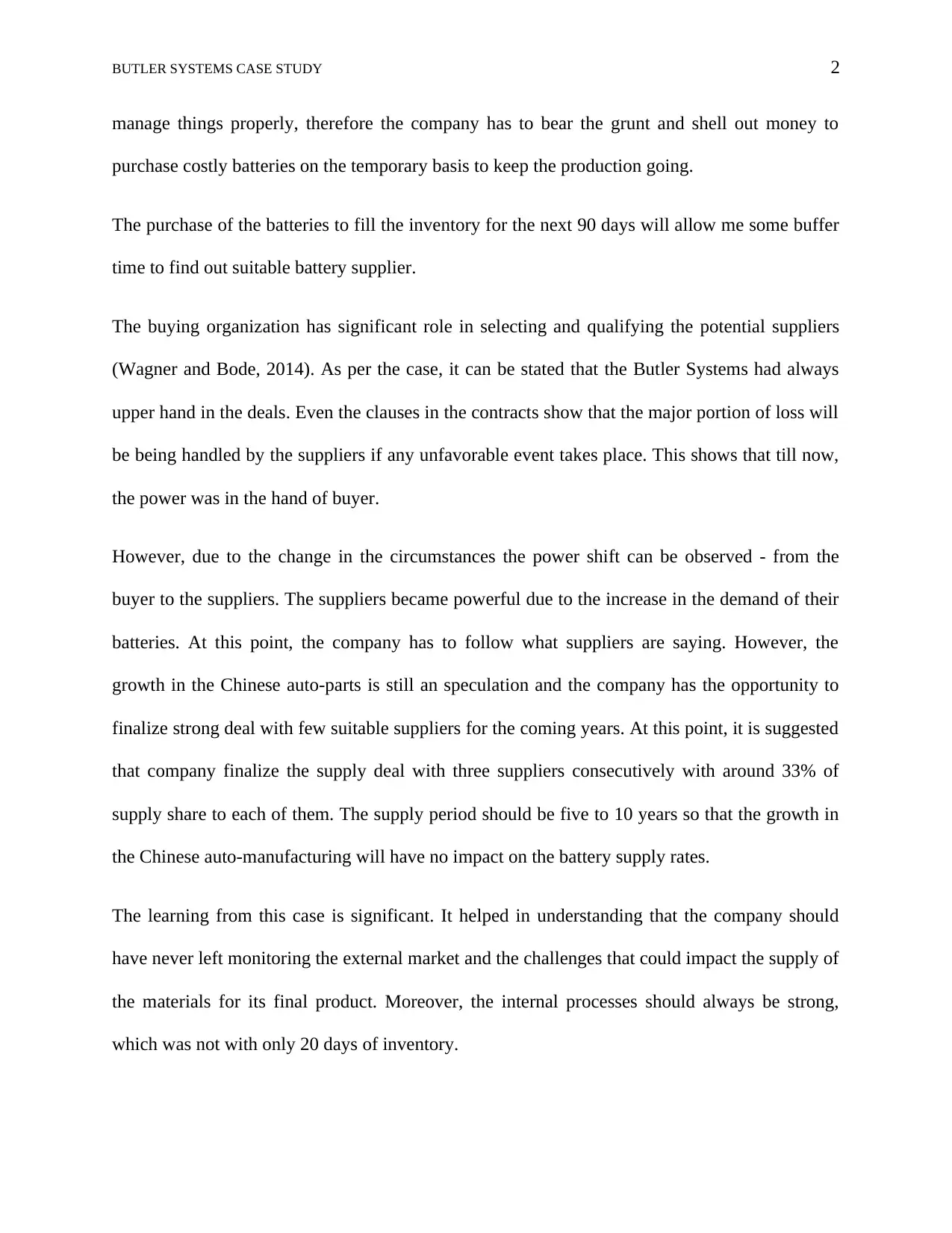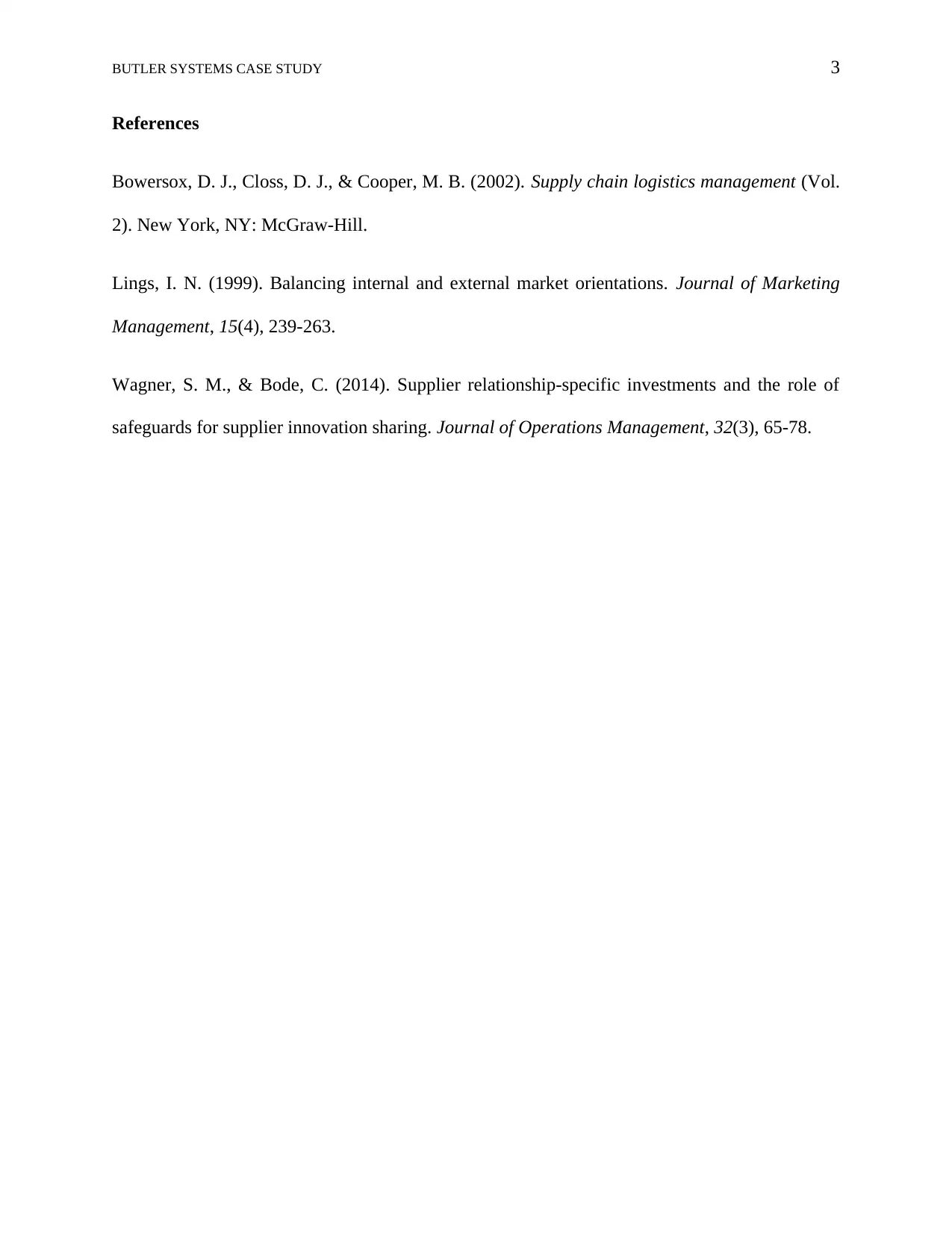Butler Systems Case Study
VerifiedAdded on 2019/09/30
|4
|819
|550
Case Study
AI Summary
This case study examines the challenges faced by Butler Systems due to a sudden increase in the price of HD-5 batteries, a crucial component in their EPS products. The company's contract with SD5, their primary supplier, became void, and the supplier doubled the price due to increased demand from Chinese auto-manufacturers. The case highlights the company's inadequate inventory levels (only 20 days instead of the recommended 90 days) and lack of attention to external market changes. The analysis suggests immediate actions to replenish inventory and long-term strategies to diversify suppliers and secure long-term contracts to mitigate future risks. The study emphasizes the importance of proactive market monitoring and robust internal operational management in maintaining a stable supply chain.
1 out of 4








![[object Object]](/_next/static/media/star-bottom.7253800d.svg)